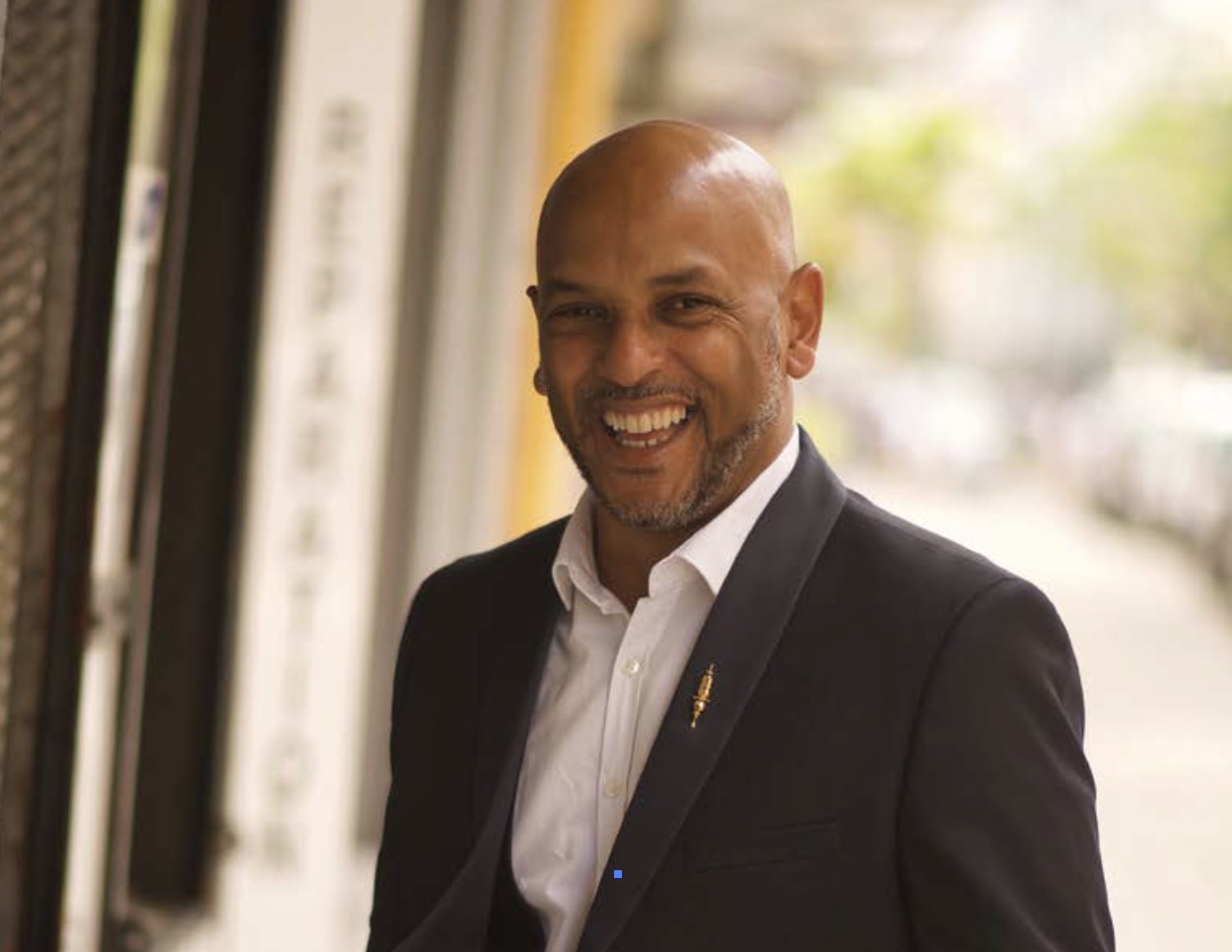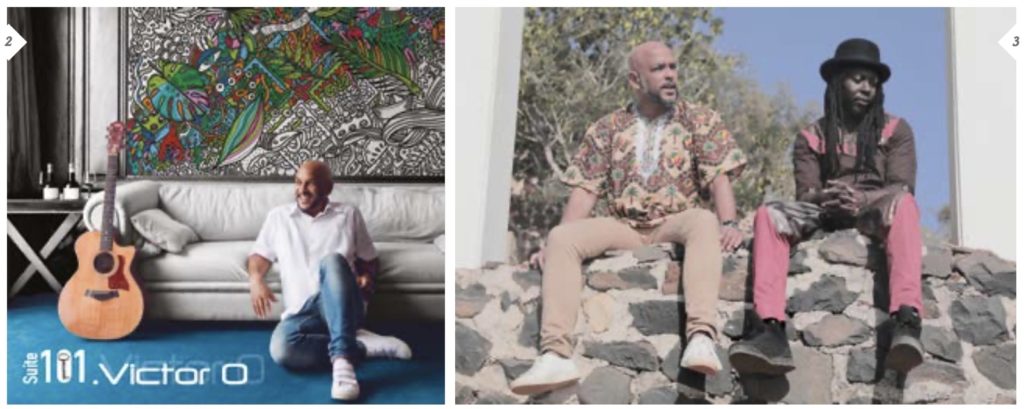
Victor O likes to be precise about his style: it’s “Kreyol Pop rather than Pop Kreyol”. And Creole implies mixing rooted in africanity.
The artist’s muse is a Caribbean without borders, a Whole World, where meetings and fusion bring new life to his creations.
ONAIR: Victor O is not your proper name and shows you as the storyteller of an imaginary world, Mr. Emmanuel Valère …
Victor O: (laughs) I always enjoyed telling stories through someone else’s filter like David Bowie did with Ziggy Stardust, his double. Victor O was born when I was a child: one of my older brothers told me that I was adopted from Brazil and that my real name was Victor Orebon. Twenty years later, this stage name appeared as proof.
OA: You grew up in the Paris region What was your musical style before being Victor O?
VO: After Creole Funk, I went toward “Labelle noire”, where the French band IAM came from, and within the framework of Sensitive Musique. I wrote and produced the 1st album of actress Clémentine Célarié there. Beyond showbiz, she help me acquire freedom in writing. Later, with DJ Walter Wallace, we created Dafataigazz, an Afro-pop concept that won over Polydor Universal. After this album signed for the firstime by the pseudonym Victor O, I returned to Martinique, reconnecting with the essence of what I have always been: a fusion composer.

2. Suite 101 Album cover / 3. Victor O and onAir 54 4. Faada Freddy in Senegal / 2. @lesphotodesmerveilles / 3. Tic et Tac
OA: You were propelled onto the national scene with the prophetic song “Aboubacar 53%”.
VO: This song was launched with a clip produced with my friend and producer Joël Jaccoulet. It is about the fictional political career of a mixed-race Franco-Ivorian elected President. It was around the time of the 2007 presidential election. Less than two years after it came out, the U.S. elected Obama … with 53% of the vote! For the media, from a utopian I had become a visionary. I was interviewed by French LCI TV channel about this happy coincidence.
OA: In 2012, you toured Brazil with the Alliance Française. How did the fusion with the Brazilian pagoda come about?
VO: It was a 24-day tour: 11 concerts from North to South. In Salvador de Bahia, we had an improvisation with a percussionist in the hotel room. All the instruments couldn’t fit, so doors and drawers turned out being used as the percussion. This rhythm piece recorded live is Alma Negra’s, from album Diasporas.

OA: This mixing tendency was made real in Guyana. What was the catalyst for collaborating with the Bushinengues?
VO: I was invited to an artist’s house at the Mana Storytelling Festival for a meeting between musicians from the West Indies – Chris Combette, Jeff Joseph and myself – and New Combinati, a local group of Bushinengues (editor’s note: descendants of slaves on the banks of the Maroni). A year later, on the banks of the Mana River, I recorded the song Dansi Mang with them from the album Diasporas.
OA: Along the same lines, you crossed the ocean to work with Faada Freddy. How did you meet? VO: During the Canal + Tour in Martinique, we had a jam session behind the scenes. We saw each other in Joël Jaccoulet’s studio and prepared, in just a few hours, a track I am very proud of. Two months later, we left for Senegal to meet Faada Freddy… and our roots. We also took lots of pictures.
OA: Is image another of your accomplishments, as shown by the care you take in your clips?
VO: I really am a lover of Art and image in particular. This goes naturally with the profession’s evolution where stories and storytelling have become important. This approach was particularly shown in my last album, Suite 101 … It is a little cliché for an artist to compose in a hotel room, alone, with a guitar. When I discovered that suite at the Batelière Hotel in Martinique, I did write, but also recorded and captured images that can be found in the clip for the song “Lanmou Etewnel”. I also asked illustrator Gribouilliz to create a digital fresco to decorate one of the suite’s white walls.
OA: What creative surprise do you have in store for the public?
VO: We shot a clip with Faada Freddy in Senegal and it’s gonna come out soon. The song is called “Love Will Come”, with the idea of resistance and peaceful resilience.

